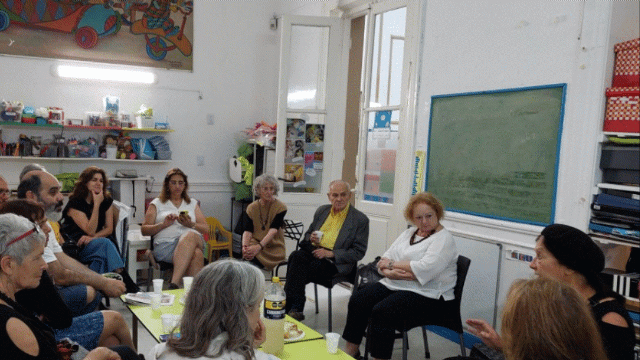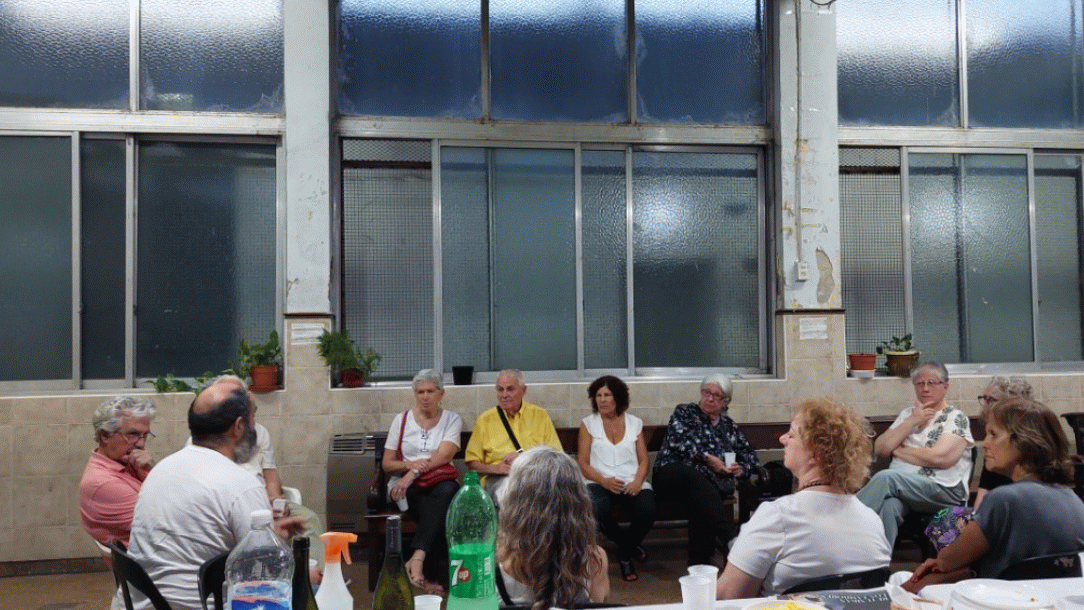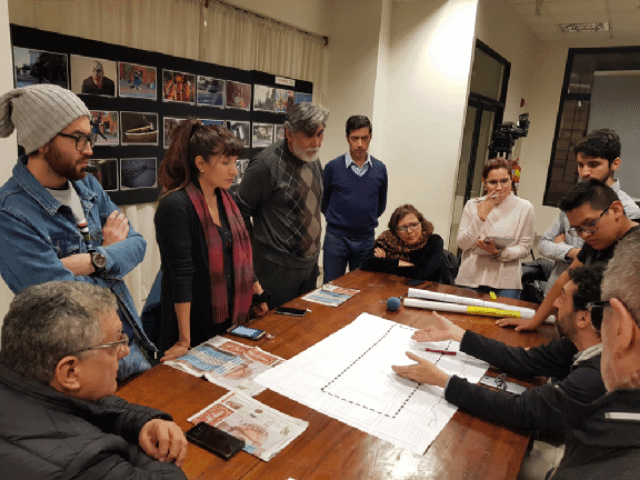Education and participation: An outsider’s view of the trash problem and its possible solutions
As the historic district becomes increasingly one of the most visible and popular areas of Buenos Aires, its equally visible garbage and deplorable public hygiene becomes a more urgent problem. Both residents and visitors alike complain about the sprawling trash piles on certain street corners and the never-ending obstacle course of excrement (human and animal) on the sidewalks, and everybody seems to agree that something needs to be done, but no one can agree on what.
While our cover story deals with these questions in more practical terms, I would like to highlight two principles that could point toward a solution: participation and education. Everywhere, trash is an issue that no one wants to deal with, because it forces us to confront the reality of our wastefulness, and the unsustainable nature of our lifestyles. Dealing with trash is an unwanted task relegated to municipal authorities (who delegate it to private companies like Cliba), or to the masses of urban poor who eke out a living sorting and recycling our refuse.
We don’t like to take responsibility for our own waste, and yet the only sustainable way to deal with it, both individually and collectively, is exactly that: recognize and take responsibility for our actions—“education”—and play our part in reducing it—“participation.”
I will use the examples of Honolulu, Hawaii and San Francisco, California—two cities in which I have lived and observed the relationship between a society and its refuse.
In the municipality of Honolulu trash is a problem—not as visible as it is here in San Telmo, but just as serious. Honolulu lies on a small island with limited space for landfills. Its fragile ecology is threatened by the long-term pollution of accumulated trash; and that ecology is also what its principal industry, tourism, depends on to attract visitors.
Each year, the island produces more and more garbage with less and less space to bury it. The municipal landfill has reached its carrying capacity, and it can’t be deepened without contaminating the water table. What to do?
The obvious answer would be: recycle. Most North American cities have curbside recycling programs for their residents, yet people are shocked to discover that Hawaii does not, even though it has the economic and social resources to develop one.
While people like to blame the government’s laziness for this discrepancy, I believe it is also the lack of participation on the part of residents in creating and demanding solutions. There is something called “the plantation mentality” that refers to Hawaii’s era as an economy of sugar and pineapple plantations. During this time much of its population was composed of immigrant agricultural workers who lacked the political and economic tools to question authority.
Over time, this produced a habit of “leaving it to the boss” and not taking responsibility on a personal level for problems in the public sphere. One can hardly blame the government for taking advantage of this relaxed atmosphere, and indeed local politics in Hawaii are famous for their inefficiency, corruption, and ineffectiveness.
This is a dynamic that appears in many places where an uninformed public equals an unmotivated public. And where there is an unmotivated public, generally there is an unmotivated government—or at least a government motivated by internal politics and lucrative backroom dealings with the private sector. Sound familiar?
My second example is from San Francisco, seen by many to be a model of progressive governance. It has the highest recycling rate of any other city in the U.S.: an impressive 68% of all its municipal waste. For every 10 tons of garbage generated, 7 are reused! But it’s not just an issue of the government taking responsibility for recycling your garbage—the people are actually the ones who make it happen. In fact, the importance of recycling is so culturally embedded that, when throwing something away in someone else’s house, you automatically ask where they keep their [aluminum/plastic/paper] recycling containers, and in many cases people also have compost containers in their kitchen to recycle organic waste.
While some attribute this to an unusually responsible city government, most agree that it’s San Francisco’s residents who have shaped a government policy that is responsive and accountable to the needs of its residents. This is in part because San Francisco has a long tradition of activism and citizen engagement in politics. Since the 1960s, when it was a bastion of the civil rights and anti-war movements, San Francisco’s residents have cultivated a culture of grassroots organizing and protest. Today it has one of the most developed NGO/philanthropic sectors in the country, and a legacy of citizen-led initiatives on everything from immigrant rights to environmental health (it’s worth noting that San Francisco’s public buses are electric, and therefore noise and pollution-free).
To me San Francisco’s success can be traced to the two principles I mention above: education and participation. Its media is diverse, with hundreds of independent publications, radio programs, and websites maintaining a well-informed public. One might even say that people’s tendency to mistrust government has produced a population that takes responsibility for educating itself, rather than relying on authorities for information and answers.
Because people are informed, they have the tools to create initiatives to satisfy their demands. In Argentina after the 2001 crisis there was popular mobilization as cooperatives, collectives, and piqueteros took matters into their own hands. But a crisis isn’t necessary in order for people to self-organize at the community level. Education can replace urgency as a catalyst for participating in public life.
As our cover story illustrates, there are many alternatives and solutions available to residents if we really want to deal with the problem of trash. And as the examples of Hawaii and San Francisco show, it is not a matter of being in the First or Third World, but of being informed and motivated enough to participate in public life and determine how its issues are resolved.
Certain problems lend themselves well to citizen involvement, because they are rooted in our private lives. The way we choose to consume (glass or plastic bottles); whether we bring a shopping bag to the supermarket or fill our kitchens with plastic bags; and whether we separate our garbage are all measures that begin in the private sphere. Once there is momentum and organized demands at a community level, it becomes harder for authorities to ignore that community.
San Telmo could be a sparkling example to the rest of Buenos Aires of what happens when people take the time to educate themselves on the options, and participate in creating solutions.
—Catherine Black























